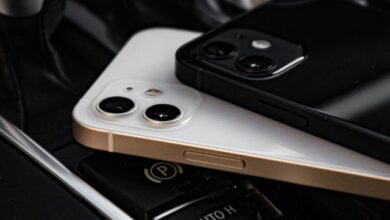How to Pick the Right Canon Lens for Your Camera

How to Pick the Right Canon Lens for Your Camera- Picking the right lens for your Canon camera is an important decision, as the lens you choose can greatly impact the quality and versatility of your photography. With a wide variety of lenses available, it can be overwhelming to choose the right one. However, by considering factors such as your photography goals, your camera’s sensor size, focal length, budget, and image stabilization technology, you can find the lens that best suits your needs. In this guide, we’ll go over these factors in more detail to help you choose the right Canon lens for your camera.
How to Pick the Right Canon Lens for Your Camera
Choosing the right lens for your Canon camera can be a complex process, as there are many different factors to consider. Here are some tips to help you pick the right lens for your needs:
- Determine your photography goals: What type of photography are you interested in? Landscape, portrait, wildlife, street, sports, macro, or travel? Knowing what you want to shoot will help you choose the right lens.
- Consider your camera’s sensor size: Canon makes lenses for full-frame and APS-C cameras, so be sure to select a lens that is compatible with your camera’s sensor size.
- Decide on focal length: The focal length of a lens determines its magnification and field of view. A wide-angle lens is best for landscapes and architecture, while a telephoto lens is ideal for wildlife and sports photography.
- Determine your budget: Canon lenses can range in price from a few hundred to several thousand dollars, so it’s important to determine your budget and choose a lens that fits within it.
- Consider image stabilization: If you plan to shoot in low light conditions or want to reduce camera shake, look for a lens with image stabilization (IS) technology.
- Read reviews and do your research: Before you make a purchase, read reviews from other photographers and compare lenses side by side to help you make the best decision.
- Try before you buy: If possible, rent a lens and try it out for yourself before you make a purchase. This will give you a better idea of how the lens performs in real-world conditions.
Remember, the right lens for your camera will depend on your individual needs and photography goals. Take your time, do your research, and choose a lens that will help you capture the images you want.
Canon SLRs: EOS Rebel, x0D, and xD
The Canon EOS Rebel, x0D, and xD are all different series of Canon digital single-lens reflex (DSLR) cameras.
The Canon EOS Rebel series is the entry-level line of Canon DSLRs, designed for amateur photographers and those new to DSLR photography. These cameras are known for their ease of use, affordability, and versatility.
The x0D series is Canon’s mid-range line of DSLRs, designed for advanced amateur photographers and those looking for more advanced features. These cameras are known for their improved performance and features, such as faster autofocus and better image quality.
The xD series is Canon’s high-end line of DSLRs, designed for professional photographers and those who demand the highest level of performance and image quality. These cameras are known for their fast autofocus, high-resolution images, and advanced features, such as weather sealing and improved durability.
Regardless of which series you choose, all Canon DSLRs are compatible with the full range of Canon EF lenses, giving you a wide variety of lens options to choose from. It’s important to consider your photography goals and budget when choosing between the different series of Canon DSLRs.
- How to transfer photos and videos to your iPhone
- iPhone 15 camera expected to improve photo quality with less overexposure
- How To Use iCloud Photos on Non-Apple Devices
Canon EOS M: The First Try at Mirrorless
The Canon EOS M is Canon’s first attempt at a mirrorless camera. Mirrorless cameras are a newer type of camera that use electronic viewfinders (EVFs) instead of traditional optical viewfinders found in most DSLRs.
The Canon EOS M was released in 2012 and offered a compact, lightweight alternative to Canon’s DSLRs, while still retaining the image quality and performance that Canon is known for. The camera was designed with both amateur and professional photographers in mind, offering a range of advanced features and compatibility with Canon’s EF and EF-S lenses.
One of the key benefits of the Canon EOS M was its compact size and weight, making it an ideal choice for travel and street photography. The camera also offered a range of advanced features, such as full HD video recording and a touch-sensitive LCD screen for easy navigation and control.
While the Canon EOS M received mixed reviews and was criticized for its slow autofocus, Canon has continued to improve and develop its mirrorless camera line, with newer models offering faster autofocus and improved image quality. The Canon EOS M was an important first step in Canon’s foray into the mirrorless camera market, and it helped lay the foundation for the company’s continued development and innovation in this field.






